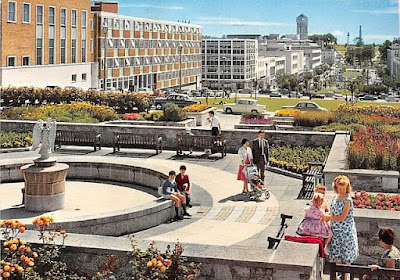The north coast of Wales is distinguished by two utterly different aspects. Firstly, it has a concentration of mighty castles built by Edward I. Secondly, it is lined for much of its length with rather gaudy seaside resorts.
The lovely resort of Llandudno stands out by comparison. Its 2-mile promenade around a gently curving bay has lost little of its Victorian splendor, with its pier and Punch and Judy puppet shows on the sand. Take
a cable car or the funicular railway up the Great Orme, the headland
which separates the town's two beaches, for a spectacular view. On the
west shore stands the White Rabbit Memorial, commemorating Lewis
Carroll's walks along the seafront with Alice Liddell, the inspiration
for his famous story, Alice in Wonderland.
The Beach * West Shore * Mostyn Street * Donkeys
Llandudno lies in a truly beautiful setting between two headlands - the Great Orme and its smaller neighbour, the Little Orme. This fine spacious town of wide avenues and tree-lined streets has all the facilities a holidaymaker could wish for in sport and entertainment. Window shopping in Mostyn Street and the surroundings area is free and pleasurable, offering comfortable shade on the covered sidewalks. The magnificent twin beaches at Llandudno are very popular with sailing and swimming enthusiasts.




















